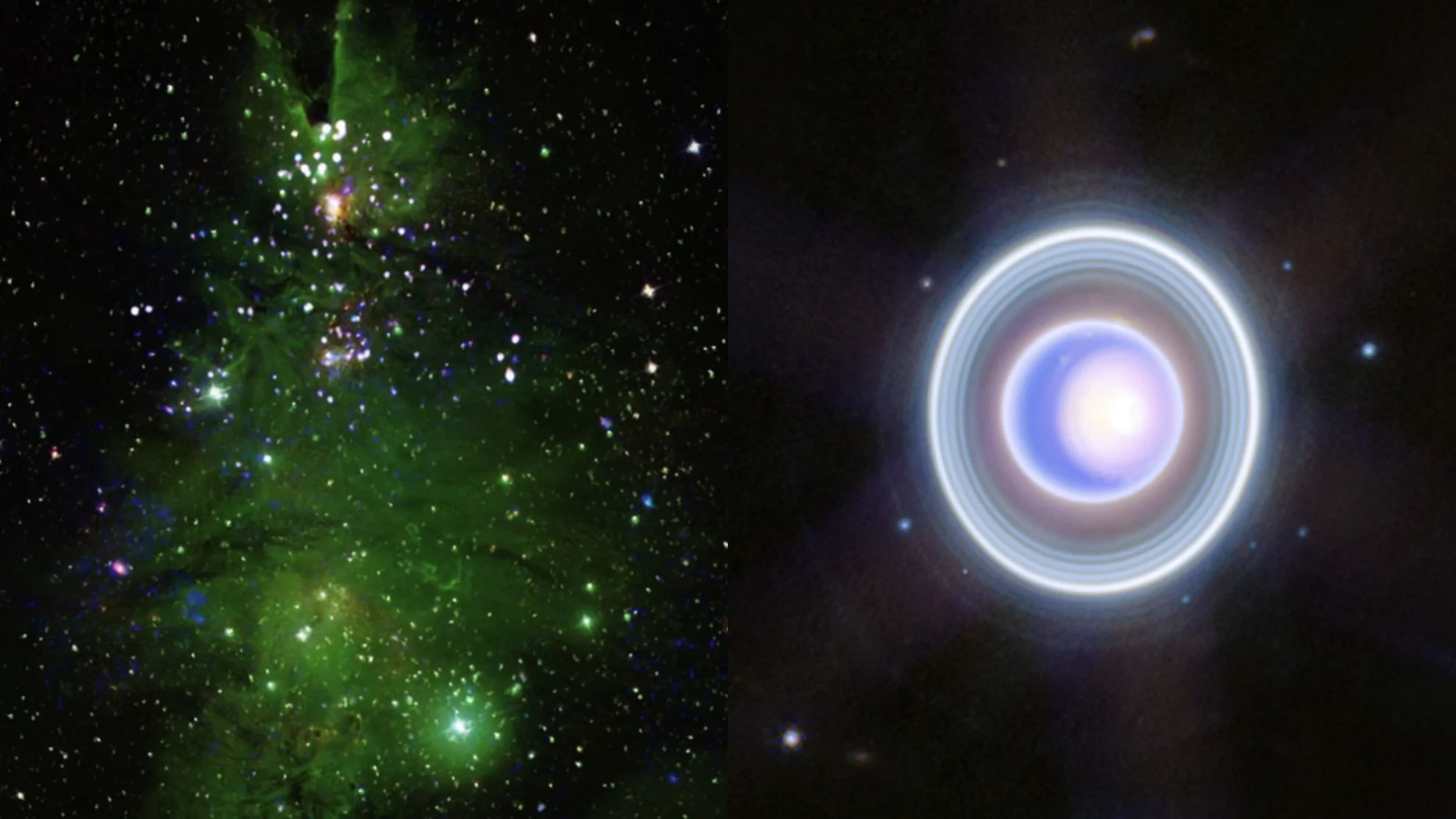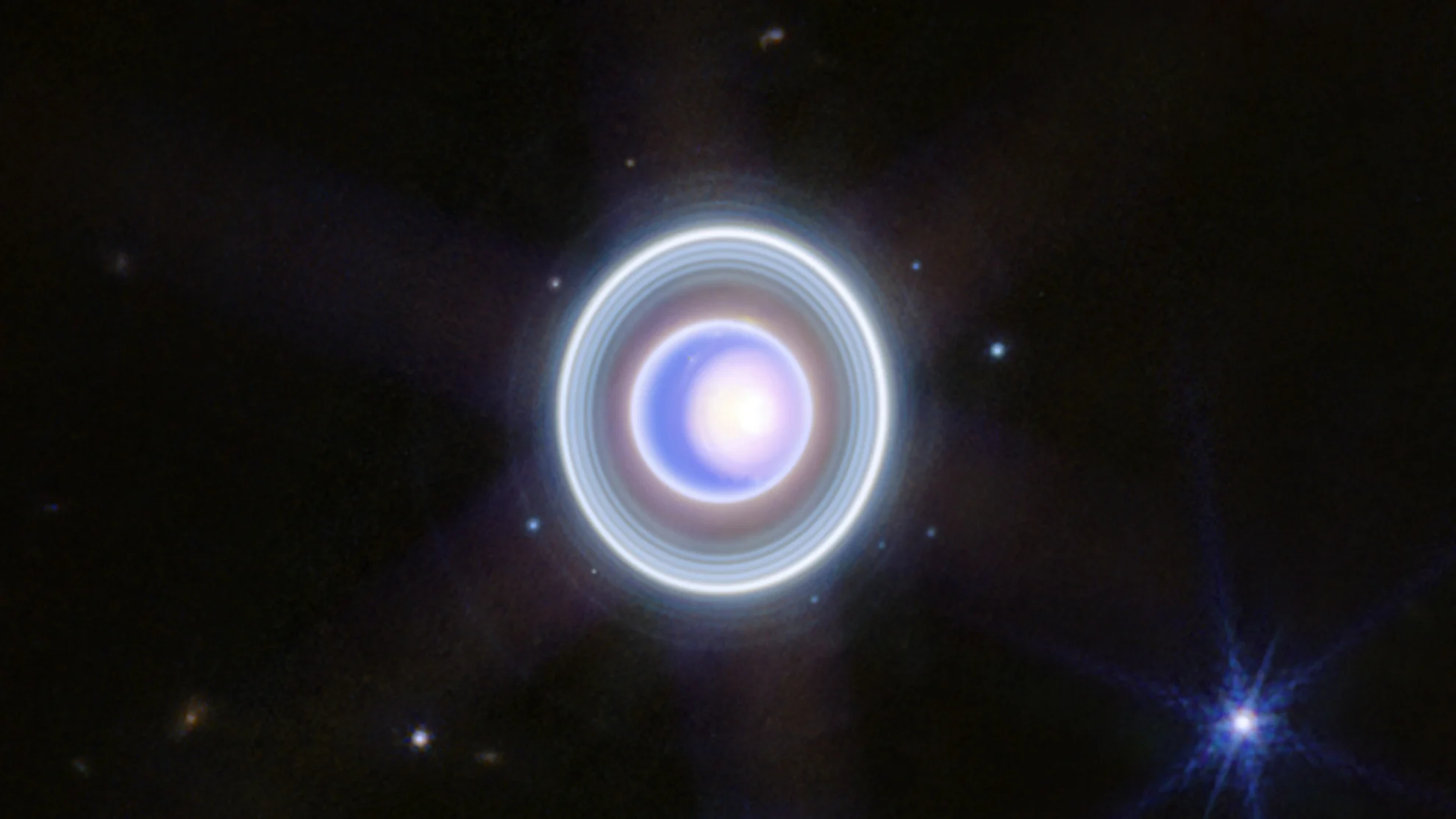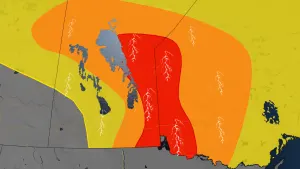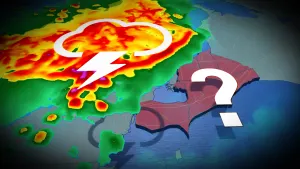
NASA gifts us with 'out of this world' views ahead of the holidays
'Ring' in the holidays with these new festive views of the solar system and beyond!
Just in time for the holidays, NASA released two amazing images to help put us into the festive spirit.
Roughly 2,500 light years away from Earth is a cluster of stars, gas, and dust that goes by the name NGC 2264. Due to its shape and appearance, though, it is often called the Christmas Tree Cluster.
Although it has been imaged before, with the Hubble Space Telescope capturing some of the best close-up views to date, a recently released image combines the work of three different telescopes to show exactly why this nebula earned its nickname.

The Christmas Tree Cluster. Credit: X-ray: NASA/CXC/SAO; Optical: T.A. Rector (NRAO/AUI/NSF and NOIRLab/NSF/AURA) and B.A. Wolpa (NOIRLab/NSF/AURA); Infrared: NASA/NSF/IPAC/CalTech/Univ. of Massachusetts; Image Processing: NASA/CXC/SAO/L. Frattare & J. Major
According to the Chandra X-ray Center: "This new composite image enhances the resemblance to a Christmas tree through choices of color and rotation. The blue and white lights are young stars that give off X-rays detected by NASA's Chandra X-ray Observatory. Optical data from the National Science Foundation-supported WIYN 0.9-meter telescope on Kitt Peak shows a nebula of gas in the cluster in green, corresponding to the 'pine needles' of the tree. Finally infrared data from the Two Micron All Sky Survey shows foreground and background stars in white. This image has been rotated clockwise by 160 degrees from the astronomer's standard of North pointing upward, so that it appears like the top of the tree is toward the top of the image."
DON'T MISS: Solar max is approaching. Here's where and how to see the Northern Lights
Much closer to home, the James Webb Space Telescope recently captured a view of the 7th planet from our Sun, Uranus, making the immense planet and its rings look like a shining ornament that would brighten any Christmas tree.

This image of Uranus from Webb's NIRCam (Near-Infrared Camera) captures Uranus's seasonal north polar cap and dim inner and outer rings. This Webb image also shows 10 of the planet's 27 moons. Those among the rings, clockwise starting at 2 o'clock, are: Rosalind, Puck, Belinda, Desdemona, Cressida, Bianca, Portia, Juliet, and Perdita. The bright multi-pointed 'star' in the bottom right is Ariel. NASA, ESA, CSA, STScI
Due to the remarkable capabilities of Webb, the tilted ice giant's north polar cloud cap is now shown in even more detail than before, many of its known moons were spotted, and its entire ring system was imaged, including the diffuse and elusive Zeta ring closest to the planet.
According to NASA: "Several bright storms can also be seen near and below the southern border of the polar cap. The number of these storms, and how frequently and where they appear in Uranus's atmosphere, might be due to a combination of seasonal and meteorological effects. The polar cap appears to become more prominent when the planet's pole begins to point toward the Sun, as it approaches solstice and receives more sunlight. Uranus reaches its next solstice in 2028, and astronomers are eager to watch any possible changes in the structure of these features. Webb will help disentangle the seasonal and meteorological effects that influence Uranus's storms, which is critical to help astronomers understand the planet’s complex atmosphere."










